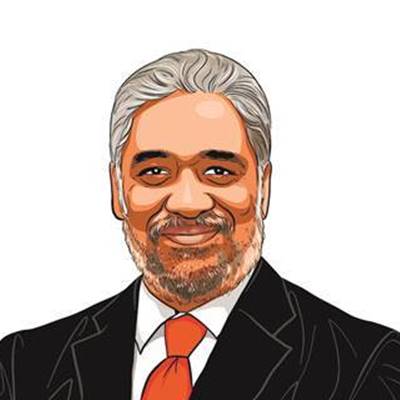Opinion Looking beyond Malacca
As Vietnams president visits Delhi,India must accelerate this strategic partnership.
India has traditionally defined its security perimeter as stretching from Aden to Malacca. It was a framework that was first articulated during the British Raj,when the undivided subcontinent provided security across the Indian Ocean.
In recent years,Prime Minister Manmohan Singh,and his predecessor,Atal Bihari Vajpayee,have reclaimed that tradition by invoking the strategic metaphor Aden to Malacca.
The visit of Vietnamese President Truong Tan Sang this week to Delhi offers the prospect of extending Indias security perimeter to the east of Malacca,to include the South China Sea and the Western Pacific.
As Indias interests in the Pacific expand,Vietnam is emerging as the main anchor of New Delhis strategy to protect them. However,Vietnams new importance to India has been misrepresented by the media at home and abroad by viewing it though the distorting prism of China.
The recent buzzing of an Indian vessel,INS Airavat,apparently by the PLA navy off the Vietnamese coast,and Chinas objections to Indias planned oil exploration activity in Hanois waters claimed by Beijing,have led to an over-interpretation of the South China Sea issues for the India-Vietnam partnership.
The territorial disputes in the South China Sea are complex and involve Beijing and a number of Southeast Asian countries. India does not take sides in these disputes. Delhi has welcomed the multilateral process underway between China and the Association of the Southeast Asian nations to resolve the disputes in the South China Sea littoral.
India can never be the decisive player in the South China Sea,which has emerged as one of the worlds major flashpoints in the 21st century.
Geography both political and strategic reminds us that Indias contributions to order and stability in the South China Sea must necessarily be modest for the foreseeable future.
An assessment of Indias genuine and growing interests in the South China Sea have been further complicated by those who force a comparison between the Indo-Vietnamese relationship and the China-Pakistan partnership.
To define the deepening cooperation between Delhi and Hanoi as a tit-for-tat response to the Sino-Pak alliance does grave injustice to the history and the current context of Indo-Vietnamese ties.
The bonds between the two countries date back to the exchange of goods,ideas and pilgrims two millennia ago. The Champa Kingdom,that reached its peak during the 9th to 10th centuries,underlines the depth of the civilisational contact between India and Vietnam.
More recently,in the mid-20th century,Indias Jawaharlal Nehru and Vietnams Ho Chi Minh were at the forefront of the efforts to forge a new Asian identity. India backed Vietnam as it became a powerful symbol of Asias anti-colonial and anti-imperialist struggles in the second half of the 20th century.
India was among the handful of nations that backed the Vietnamese intervention in Cambodia in 1978 to oust the genocidal clique of Pol Pot. When the United States,Europe,China,Japan and the ASEAN sought to isolate Vietnam in the 1980s,Delhi stood like a rock with Hanoi.
Indo-Vietnamese ties today are defined by the declaration of a comprehensive partnership in 2003 and a strategic one in 2007,built around a broad-based convergence of interests,and rooted in a relative improvement of the regional and global positions of Delhi and Vietnam.
While the notion of Indias rise has received much attention,the transformation of Vietnam over the last decade has not got adequate attention in Delhi. With a population of nearly 90 million,the 13th largest in the world,and an economy growing at a fast clip,Vietnam has become a powerhouse in the ASEAN.
All projections suggest Vietnam will be a major contributor to global growth in the coming decades and a priority economic partner for India,without any reference to other political considerations,including China.
Delhi and Hanoi seek a multipolar Asia that is not dominated by any one power. Both countries support an open and inclusive architecture for regional security in Asia. As trading nations that are increasingly dependent on the seas,both India and Vietnam have a common interest in the protection of freedom of navigation in Asian waters.
With nearly 3,400 km of coastline,Vietnam is critical for the maintenance of peace,security and good maritime order in the South China Sea that connects the Pacific and Indian Oceans.
If Vietnam is the natural hub for Indias rising profile in the Pacific,Delhi has become an important element in Hanois quest to diversify its security partnerships. Vietnam is vigorously expanding its relations with all the major powers,including the US,Europe,Russia,and Japan.
Neither Delhi nor Hanoi has any interest in defining their relationship in opposition to China,a neighbour to both. While India and Vietnam have had difficult relations with Beijing,both have high stakes in a productive engagement with China.
As President Truong swings through India,the general secretary of the Communist Party of Vietnam,Nguyen Phu Trong,will be in Beijing for bilateral consultations at exactly the same time. Neither India nor Vietnam views their bilateral strategic partnership as a zero-sum-game involving China. It is about building on the emerging alignment of their interests in Asia and its waters.
It is now more than four years since Delhi and Hanoi identified the broad themes of their strategic partnership. These include among many others,maritime and energy security,expanded defence and intelligence cooperation,and collaboration in high-technology sectors.
Progress has been incremental and slow. Delhi must demonstrate its commitment to the strategic partnership with Hanoi by accelerating the proposed bilateral cooperation in peaceful uses of nuclear energy and space technology,intensifying support for the modernisation of Vietnamese armed forces,and deepening the naval partnership so crucial for Indias future presence in the Pacific.
The writer is a senior fellow at the Centre for Policy Research,Delhi
express@expressindia.com




